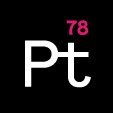Five Ways to Increase Effectiveness in Your Advertising
Sometimes in life it’s the smallest changes that can have the biggest impact. Pt78 was reminded of that last week while attending IAPI’s latest ADFX Energiser hosted in the impressive GPO Building. This session focused on the theme of ‘why effectiveness will save creativity’ and in this case there was no such thing as a free coffee and we had to actually do some work in the form of meaningful audience participation.
If advertising is really ‘under threat’, which is suggested by the sheer volume of headlines daily claiming that the end is nigh for advertising/large agencies/media agencies/insert suitable noun here, then surely it is incumbent on all of us in the industry to demonstrate the effectiveness of advertising at every given opportunity?
Measurement is something we do at the end of a campaign, right? Of course not! It will come as no surprise that the key to increasing advertising effectiveness is to ensure that it is right upfront in the planning stages as opposed to waiting until the very end of a campaign to tackle measurement and evaluation.
In this instance we decided to take all 5 stages of the creative development process and look at where the biggest barriers were likely to be, what the challenges are and how to overcome them.
5 Tips for Increasing the Effectiveness of Your Advertising:
1. Goal Setting – Here’s where it starts. Ensure goals are clearly defined, are understood by everyone involved (client-side and agencies) and that metrics are agreed on that will have a meaningful impact on the achievement of these goals. Write them down!
2. Briefing – The best briefs are worked on collaboratively between agency and client with both already having a very clear understanding of the goal(s) of the campaign and the agreed metrics that will be assessed at the end. This way, all the best brains are singularly focused on writing the brief that will elicit a great response from the planning team.
3. Agreeing on Strategy – Yes, metrics play a key role here too and the most common mistake we make is losing sight of them during the strategy development phase. Big picture thinking shouldn’t come at the expense of the hard metrics we will use to measure success. Ensure at this point that you are establishing a chain of effects to connect each action together.
4. Creative Development – Believe it or not, your target audience comprises real people with real emotions. In fact sometimes we are said to be more emotional than rational in our purchase decision-making but that’s a topic for another day. So the question here centers on what we can do to save and protect great ideas. Bring it back to the customer journey, to your original metrics; use your ‘chain of effects’ to build a protective layer around the idea (assuming it deserves this protection!) and establish a robust defense, leveraging your strategy, the ambition you have, and how it will move the needle on the metrics that you are trying to achieve.
5. Reporting and Evaluation – And now the moment of truth……hopefully, by now you’ve conducted stages 1 to 4 so perfectly, this will simply be a moment of celebration. You review the campaign in its entirety, focusing on the goals you set out to achieve and by now it’s easy to see what needles have been moved as all metrics and KPIs are understood by all. Now is the time to be a cheerleader for your Creative BUT………. do it like a CFO.
Ultimately, the secret to long term success and greater effectiveness is in creating a culture that supports effectiveness as a life support system for creativity, rather than just an output.
